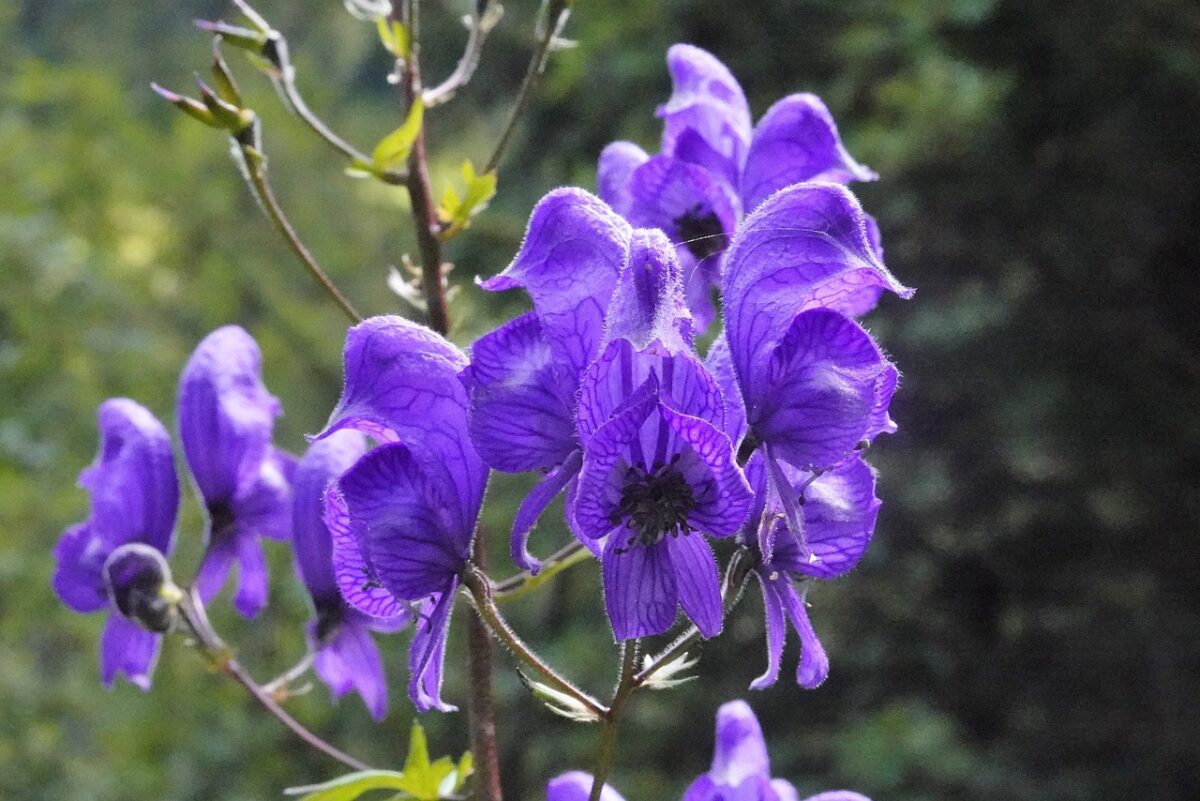Mad-dog Skullcap
Photo:
Fritzflohrreynolds, CC BY-SA 3.0, via Wikimedia Commons
The leaves of the Mad-dog Skullcap are serrated and opposing, and the stem is square and often hairless. As a member of the mint family, one would expect it to have medicinal and beneficial properties. From July to September, it blooms with tiny, trumpet-shaped flowers ranging in colour from light blue to lavender or even white. The flowers of Mad-dog Skullcap, which are usually seen in pairs or solitary, are easy to identify due to their small size. Local bees are drawn to the blossoms.
This lovely plant is rhizomatous but not aggressive, and it thrives in wet to moist conditions. Moist sedge meadows, swamps, bogs, and shorelines are among the habitat types. It is bitter and not poisonous to deer and rabbits (always a great bonus). The common name “skullcap” comes from the cap-shaped flowers and seed capsules, which resemble mediaeval military helmets.
Quick Growing Guide
Botanical Name: Scutellaria lateriflora
Also Called: Blue skullcap, Virginian skullcap, and mad-dog weed
See More Plants in this Botanical Family:
Sun / Shade:
Water: Moderately
Height:
Pollinators:
Care:
Here is a good article on how to grow Skullcap.
Appearance
This perennial grows 1 to 2 and a half feet tall and occasionally branches. The stems have a propensity to spread and are 4-angled, light green to pale reddish-green, hairless, or sparsely canescent. The opposite leaf’s blades are cordate-ovate to broadly lanceolate, up to 3″ long and 2″ wide, hairless, and coarsely serrated along the margins. Each leaf blade has a noticeable network of veins on its upper side.
The leaves have slender, light green to pale reddish green petioles that can be up to one inch long “long. The top stems produce flower racemes at both the terminal and axillary ends. Each thin raceme contains up to six. “The axillary racemes are long and have around 6-7 pairs of blooms; they extend forth from their stalks. Each flower has a short, leafy bract underneath it.

Flowers of the Mad-dog Skullcap
Each flower has a tubular calyx and corolla that measure up to 1/3″ (8 mm) in length. The corolla has short upper and lower lips and a delicate blue, lavender, or white color. The top lip is frequently a little deeper shade than the bottom lip, which is frequently white. The calyx has two shallow lobes and is light green or pale reddish green, hairless or sparsely canescent. A brief dish-shaped projection that is typical of Scutellaria spp. can be seen behind the upper lobe (Skullcaps). Each flower has a short, thin pedicel. A colony of plants goes through a blooming period that lasts between 11 and 22 months throughout the summer and early fall.
In a raceme, only a few blooms are typically open at once. There isn’t a floral aroma that stands out. Instead of a blossom, an irregularly formed seed capsule with four nutlets replaces each one. This capsule has two lobes that are attached at the base but spread apart at the terminals; the edges of these lobes are somewhat rounded and flattened. A taproot and either rhizomes or stolons make up the root system. The rhizomes or stolons frequently give rise to small plant colonies.
Habitat
Central and northern America occasionally to locally common the native Mad-Dog Skullcap. The southern region of the state often has a lower prevalence. There are many different types of habitats, such as wet sedge meadows, wet thickets, swamps, bogs, openings in floodplain forests, seeps and springs, the borders of vernal pools and ponds, damp depressions in limestone glades, and shaded clifftop locations. This plant benefits from disturbances that lower the density of woody vegetation in wooded environments. Wetland areas that are somewhat shaded frequently contain it.
How to Identify Mad-dog Skullcap
Mad-Dog Skullcap is easily identified because it has the smallest flowers in the genus (up to 1/3″ long) and numerous axillary racemes. Other skullcaps only have terminal racemes or pairs of larger flowers along their stems (for the most part). Skullcaps are distinguished from other Mint family members by their unusually formed calyxes and seedpods.
Medicinal Uses
The common name for this genus comes from the fact that some species’ seedpod lobes have a concave surface that resembles the interior of a skullcap. Foliage, on the other hand, has some medical applications due to the presence of a compound with calming and antispasmodic properties. It was once used as a rabies and schizophrenia treatment, hence the names “maddog skullcap,” “maddog weed,” and “mad weed.” This plant is also a nervine with sedative properties and is used to treat a variety of nervous conditions, including epilepsy, hysteria, anxiety, delirium tremens, and panic attacks.
Tea can be prepared to act as a mild relaxant, which is commonly used to treat anxiety, nerves, and convulsions. It can cause drowsiness and is frequently used in herbal medicines to promote sleep.







Leave a Reply
You must be logged in to post a comment.